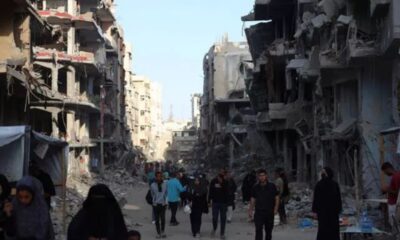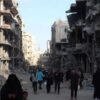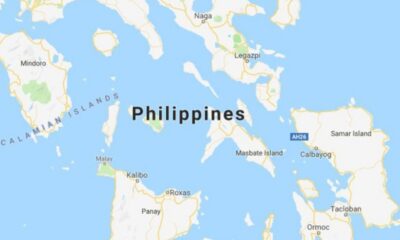At least 208 people were killed in the Philippines as a result of Typhoon Ray, which hit the country, according to a new official toll.
This comes as relief teams are striving to distribute water and food on the stricken islands.
An earlier toll, on Sunday, indicated that 109 people were killed by Ray, one of the deadliest cyclones to strike the country in recent years.
National Police statistics showed that at least 239 people were injured, and 52 others were missing after the cyclone swept through the southern and central regions of the archipelago.
The typhoon, with winds of 195 km / h, hit the central and southern Philippines on Thursday and Friday, uprooting roofs, destroying communication towers, bringing down electricity poles and uprooting trees, before heading Saturday towards the South China Sea.
Aerial photos released by the army showed great destruction in the affected areas. More than 300,000 people were forced to leave their homes.
The governor of the tourist island of Bohol (center) Arthur Yap announced earlier that at least 73 people had died in his county, according to mayors’ statements.
On Dinagat Island, regional media officer Geoffrey Chrysostomo said 10 more people had died.
The number of casualties is likely to rise with the arrival of rescue teams to the areas devastated by the cyclone.
Thousands of army, police, coast guard and firefighters were deployed to assist in search and rescue operations in the worst-affected areas.
Army and Coast Guard ships carried water, food and medicine. Heavy machinery also arrived to clean roads that were cut off when trees and electricity poles fell.
“The road will be long and difficult for the population to rebuild and take over,” said Alberto Bocanegra, IFRC official in the Philippines.
The organization called for 20 million Swiss francs (19.3 million euros) to be raised to fund relief and reconstruction efforts.
Pope Francis expressed his “sympathy with the people of the Philippines”, a country inhabited by a Catholic majority.
“May Saint Nino bring consolation and hope to families facing difficulties and inspire us all to provide concrete assistance,” he said after Sunday’s evangelization prayer.
In turn, the governor of the tourist island of Bohol said that the flight over the affected areas showed that “the residents were severely affected by the destruction of their homes and the loss of their crops.”
20 tropical storms annually
The Siargao, Dynagat and Mindanao islands were also heavily damaged, and aerial footage released by the army showed the extent of the destruction in large parts of Siargao with rooftops uprooted and scattered debris, at a time when many Filipinos went to the island to spend the New Year holidays.
On Dinagat Island, Governor Arielene Bagao said the damage was “equal if not worse” than that caused by super-strong Typhoon Haiyan in 2013.
Typhoon Haiyan is the deadliest typhoon in the Philippines, killing or missing 7,300 people in 2013.
Chrysostomo described to DZBB how “Hurricane Odette (the local name for Hurricane Ray) tore the capital apart, piece by piece.”
“Heavy tables were blown off by the intensity of the storm,” he said.
In Surigao City, at the northern tip of Mindanao, shards of smashed window panes, roof panels, electrical wires and other debris littered the streets.
Ray carried heavy rain and uprooted trees and demolished wooden buildings. He arrived Sunday off the coast of Vietnam and was heading north.
Indeed, he hit the country late in the season. The majority of tropical storms in the Pacific Ocean form between July and October.
Scientists have been warning for some time that hurricanes are getting more violent with the increase in climate warming caused by human activity.
The Philippines, one of the countries most vulnerable to climate change, is hit annually by about twenty typhoons that cause destruction to homes and destroy crops and infrastructure in areas already suffering from poverty.






























